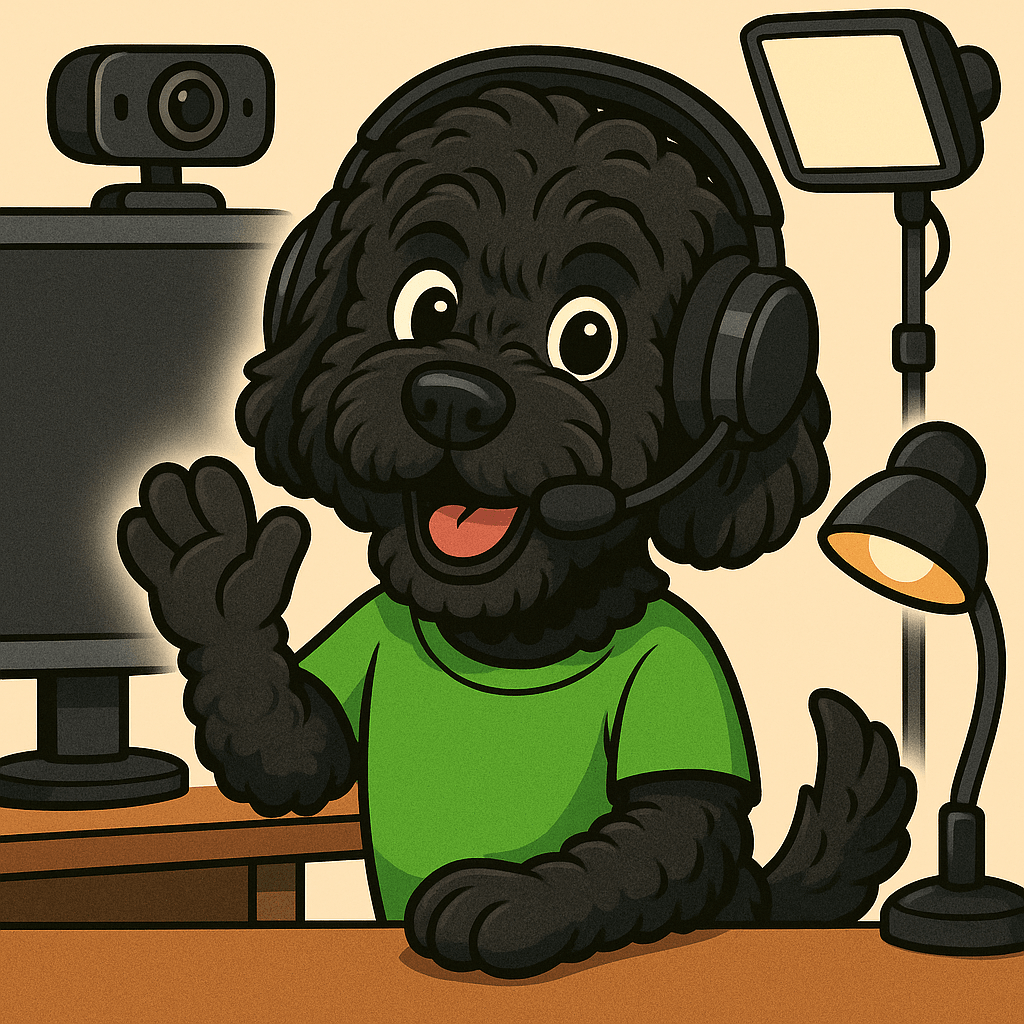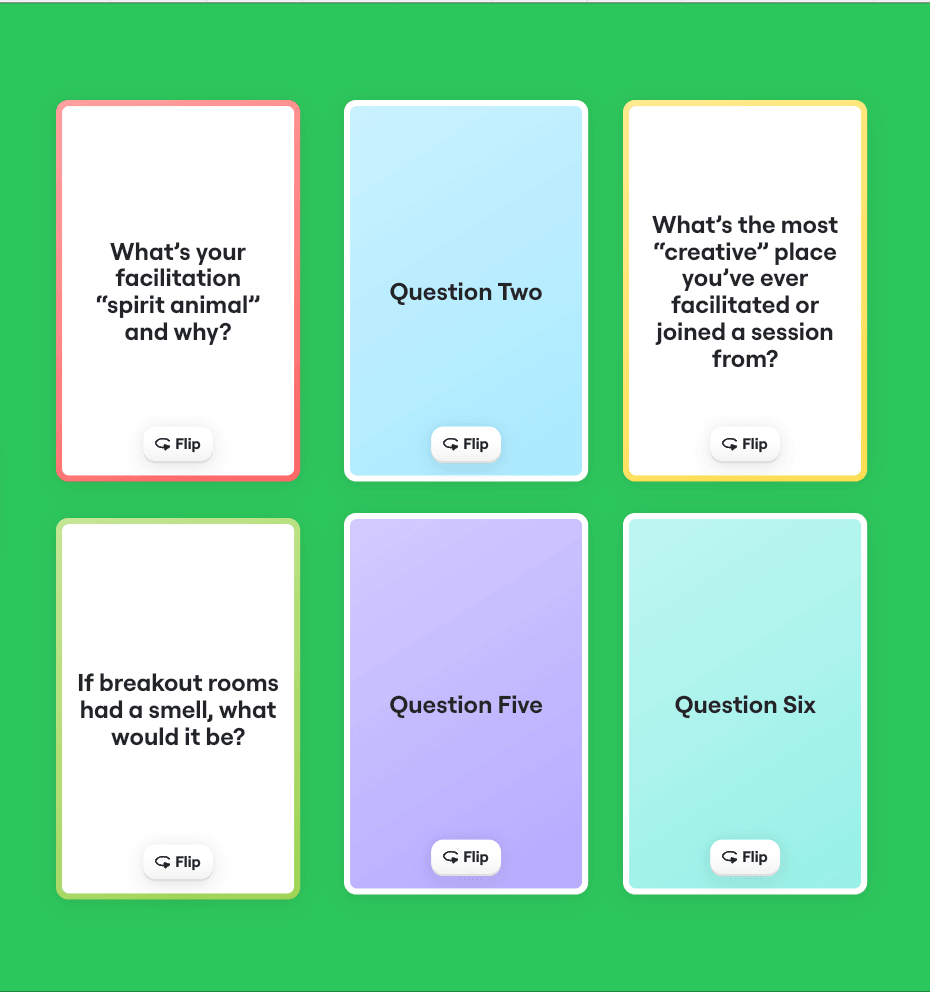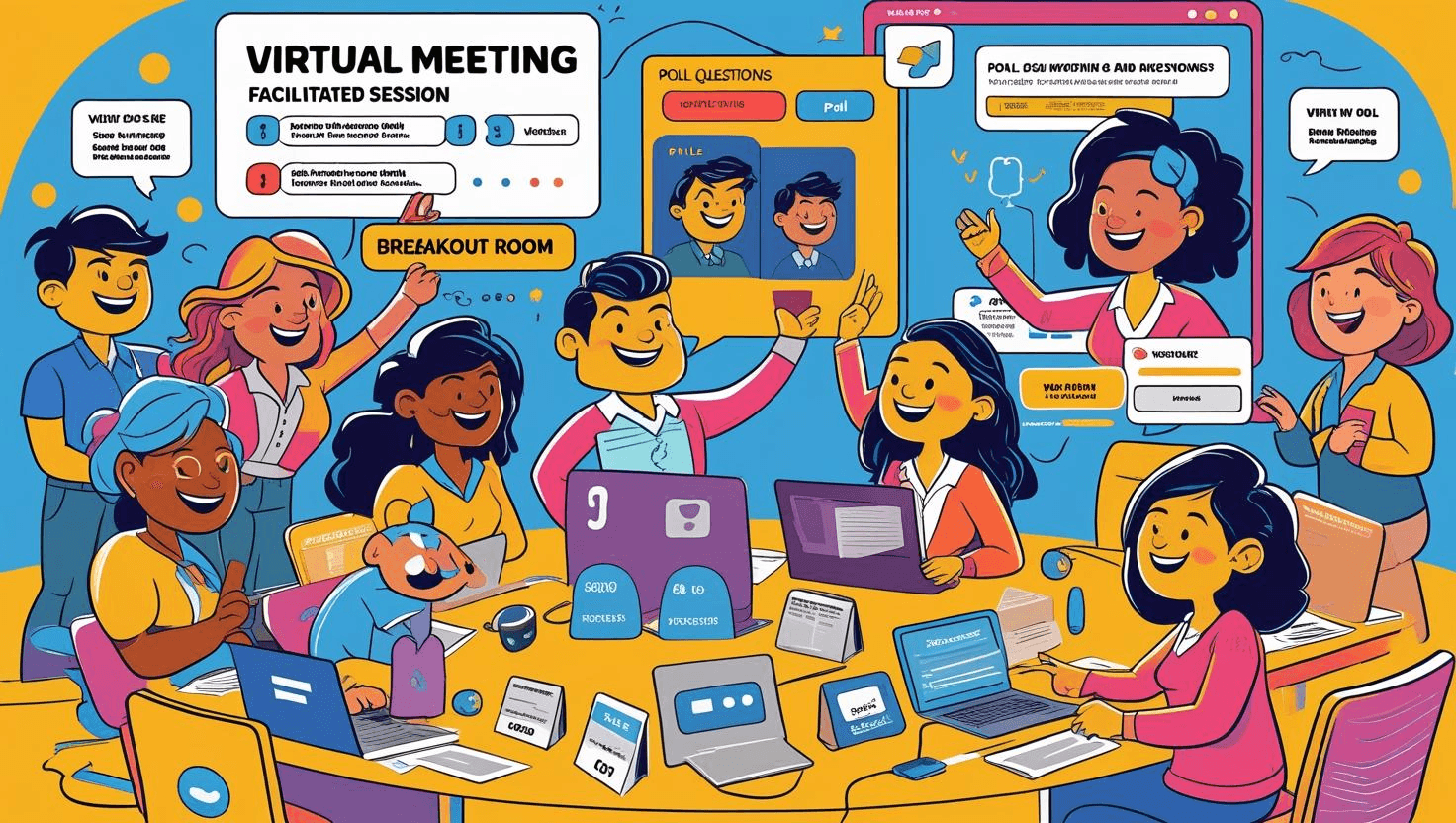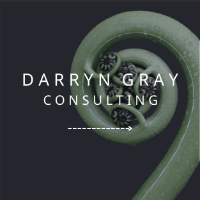30 Days of Virtual Facilitation Tips for Beginners
To celebrate the start of spring, September 2025, I decided to get crackin’ on a series of LinkedIn posts called ‘30 days of virtual facilitation tips for beginners’.
The series of short posts are designed to be super super simple ideas/tips that can be easily overlooked when facilitating in virtual spaces, but with a bit of attention paid to them, can make a massive difference to how a virtual live session goes.
You can find all the Week One posts listed below. Enjoy!
⚡In Week One the theme was ‘laying the ground work
⚡In Week Two the theme was ‘building engagement’ - Week Two posts will be available here shortly
⚡In Week Three the theme is be ‘creating connection’
⚡In Week Four the theme will be ‘flow and energy’
Oh and meet Bear the Cavoodle. He’s my work buddy and co host in a lot of the live virtual sessions I run. He appeared in some of the posts to help us along the journey. I’m totally biased, but I think he’s pretty jolly cute and he is an amazing work buddy.
NB: Images of bear were created using ChatGPT

Week 1: Laying the groundwork
Day 1: Your vibe sets the tone
Before you even say a word, let your face do the talking. The way you greet people at the start of a session is soo very very important.
A nice Kia ora, G’day or Hi, how are you, a genuine smile and a warm personal greeting tells people, "I'm genuinely glad you're here. I’m really pleased you showed up.”
That positive vibe is 100% contagious. It instantly shifts the session into a warm and friendly place.
I've found recently that as people arrive into virtual sessions, simply saying "Hey, [Name], great to see you!" or "Kia Ora [Name], How you going!’’ as people pop on screen makes them feel seen and welcome right from the start.
Day 2: The 'tech check' that saves your sanity
Let's be real, there's nothing worse than that sudden panic when your mic isn't working, your screen won't share, you can’t find the file you want to share.
It’s happened to us all 😩!
The secret to avoiding that stress?
Do a full tech check at least 15 minutes before start-time (sometimes if I have lots to check I’ll even start 30 mins beforehand). I'm talking about checking the mic, camera, slides, and any other apps you're using.
This isn’t about being perfect; it’s about giving yourself the peace of mind to focus on the people, not the tech.

Day 3: Start with ‘Why’ we have gathered
Have you ever joined a meeting and thought, “Why am I even here?” or felt like you have been dropped into a swamp or a desert with no clear path forward? That’s usually because the purpose of the session wasn’t clear.
As virtual facilitators, one of the most powerful things we can do is be really clear about why we’ve gathered, not just what we’re going to cover.
Whether you use a simple purpose statement, a slide with a session outline, or an agenda builder in your platform of choice (if it has one), that clarity up front helps people feel anchored and engaged. It signals respect for their time and makes the session’s intent obvious from the start.
Ooh and adding a little bit of success criteria can be the real icing on the cake!
Day 4: Say their name
Use people's names often, and if you can’t pronounce their name - be curious and ask. Some names have some beautiful stories behind them by the way.
When someone shares a point, thank them by name.
When you invite someone to speak, use their name.
It's a subtle way to personalize the conversation, build connection and make them feel like a key part of the session.
It's a simple act that says, "I see you, I hear you and you belong."
Building connection and belonging in my mahi (work) is something very important to me.
You can check out more of what I do on my services page www.darryngray.co.nz/services

Day 5: Melt that ice
The best icebreakers (or ice melters as they are sometimes referred to) can be low-risk and high-reward. They can be done using simple questions and writing answers on stickies with a virtual whiteboard, or you can simply write the answers into the chat.
If the group is small enough, get everyone off their mics and get them actually chatting and answering the questions. A simple "Where are you calling from?" or "What's one thing you're looking forward to this week?" works wonders.
There are also lots of cards decks out there with starter questions, and a quick AI prompt will easily generate a bank of other starter questions.
NB” in NZ and Australia allowing time at the start of a session for participants to explain where they are culturally located, or giving respect to the land they are standing on, can be incredibly important and can quickly build trust and relationship.
Remember, it's not necessarily about the answer; it's about connection before content and getting people comfortable with the idea of joining in the kōrero (conversation).
Image: Some flip cards I generated in Miro as an opening activity.
Day 6: Design for talk, not just tell
Let's flip the script.
Instead of just planning what you'll say, plan for how people will engage. Look at your agenda and ask yourself, "Where can I add a question, a poll, or a quick breakout room?"
Building in different engagement points at regular intervals in your virtual session can mix things up for participants and keep them engaged.
It really can be a bit of a game-changer. You go from being a presenter to a genuine facilitator, and the energy in the session shifts completely.
Learning isn’t a spectator sport and your virtual live sessions shouldn’t be as well.
Image: Generated by CANVA AI


Day 7: Loosen Up!
Woohoo, that represented the end of week one of my 30 days of virtual facilitation tips for beginners.
Ever noticed how your voice can sound a bit flat or tense at the start of a session?
Taking a minute to warm your voice makes a massive difference. Stand up, breathe deep, and maybe even do a little hum. That’s right just like the singers do.
If you are prone to that tickly throat, like I am, have lozenges close by and lots of water to drink during the session. Talking can be thirsty work 🙂!
Now I know this one sounds a bit weird, but a warm voice sounds more dynamic and confident. It’s a simple trick to sound your best before you even start talking.
What's your favourite way to get in the zone before a big call? Here’s Bear warming up his voice before one of our virtual hangouts.
If you would like to keep up with news, and any special updates, you can subscribe to my newsletter using the form below.

